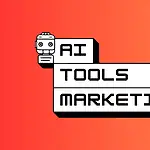Customer acquisition is much like dating. It happens in stages.
It starts with the customer being unaware of your product or service. Then, as they become aware, they start to develop interest. From there, they move into a decision-making stage where they evaluate whether or not your offering is the right fit for them. Lastly, they take action and buy from you.
But it isn’t easy to get a customer from being unaware of your product to becoming a paying customer. In order to do that, you need to build a sales funnel.
What Is A Sales Funnel?
A sales funnel is a visual representation mapping out a customer’s journey from their first contact with the brand to becoming a paying customer.
Resembling an actual funnel, a sales funnel narrows down from the top (the widest part) to the bottom (the smallest opening). This is because, as a customer goes through the stages of the funnel, they are weeded out until only the most interested and qualified prospects remain.
You can also think of a sales funnel as a process that moves potential customers through the stages of awareness, interest, decision, and action.
The Stages Of A Sales Funnel
Technically there are three stages in a sales funnel –
- Top of the funnel (ToFu): Where the customer is made aware of your brand.
- Middle of the funnel (MoFu): Where they start to develop interest.
- Bottom of the funnel (BoFu): Where they make a decision and take action.
These three stages are further divided into four stages –
- Awareness
- Interest
- Decision
- Action
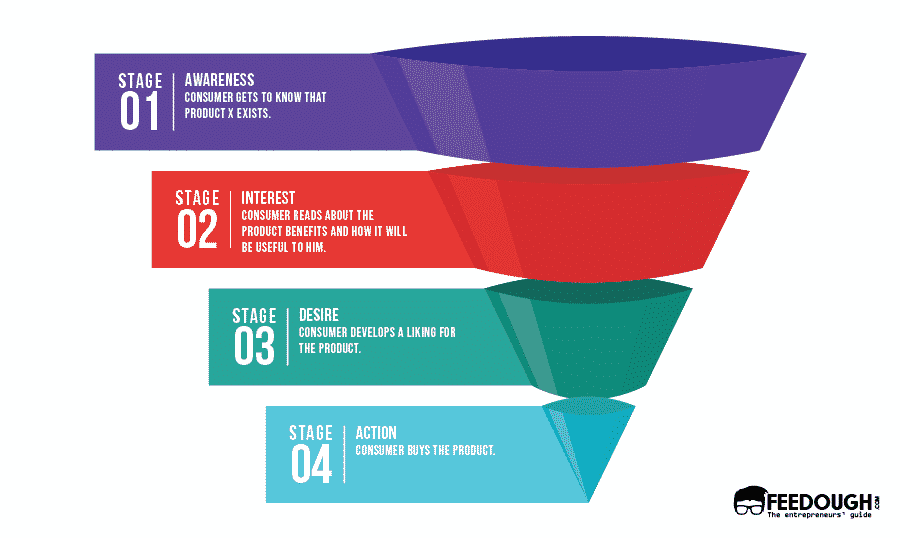
Awareness
The awareness stage is when the customer becomes aware of a problem they have. They might not know that your product or service exists, but they are undoubtedly aware that they need something to solve their problem.
For example, someone might be aware that they need to lose weight, but they don’t know about your new diet book. Or, they could be aware that their car needs fixing, but they don’t know about your mechanic shop.
This is where your job as a marketer or salesperson comes in. You need to make the customer aware of your product or service and how it can help them solve their problem.
You can do this through content marketing, paid advertising, social media, email marketing, and more.
Interest
The interest stage is when the customer starts to develop an affinity for your brand. They are interested in what you have to say, and they want to learn more about your product or service.
At this point, they are still not ready to buy, but they are getting closer. But at the same time, the number of prospects starts to dwindle as some customers lose interest.
This is where you need to continue providing value. You can do this by providing more information about your product or service, case studies, testimonials, free trials, etc.
You can also continue to nurture your prospects through email marketing and other channels.
Decision
The decision or the desire stage is when the customer is finally ready to buy. They have all the information they need, and they are convinced that your product or service is the right fit for them.
At this point, it’s just a matter of making the purchase. But even then, some customers might still need a little push to take that final step. This is where you offer discounts, coupons, free shipping, etc.
Action
The action stage is when the customer takes the final step and buys from you. But even after they’ve made the purchase, you need to continue providing value. This is where post-purchase support, warranty, follow-ups, customer relationship management etc., come in.
This is also where upselling and cross-selling come into play. By offering related products or services, you can increase the lifetime value of your customer.
How To Build A Sales Funnel?
There is no one-size-fits-all solution for developing a sales funnel. The best way to build a sales funnel is to start with the end in mind.
Think about what you want your customers to do and work backwards from there. Once you have a clear goal, you can start putting together the pieces of the puzzle.
Here’s a quick overview of how to build a sales funnel –
- Identify your target audience.
- Create a compelling value proposition.
- Develop a lead-generation campaign.
- Nurture leads to customers.
- Delight customers and turn them into promoters.
- Measure and optimise your funnel.
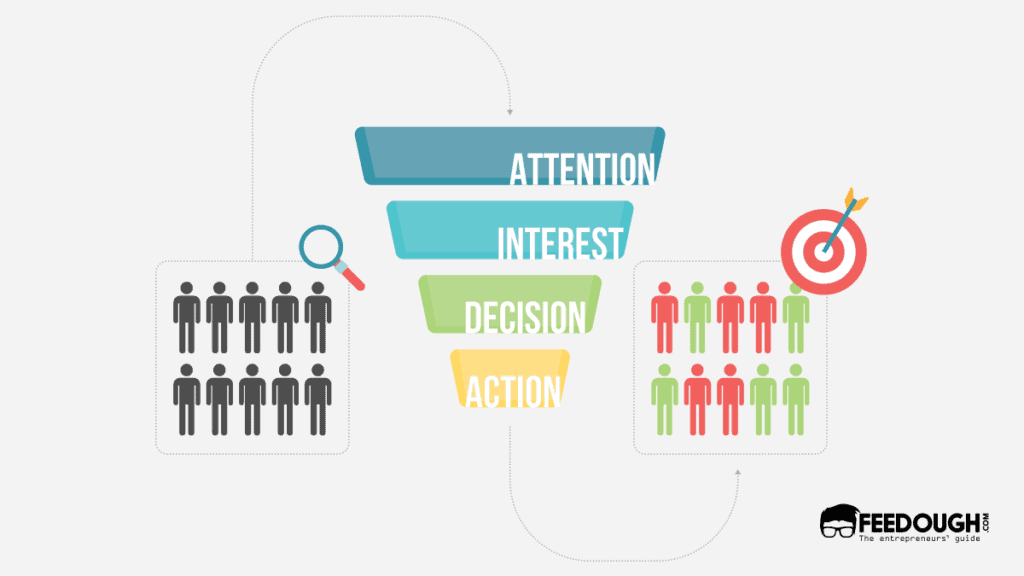
Identifying The Target Audience
Identifying who will buy from you is the first and most important step in building a sales funnel. You need to know who your ideal customer is and what they are looking for.
Only then can you create a compelling offer and develop an effective lead capture campaign.
To identify your target market, you need to answer these questions –
- What problem are they trying to solve?
- What are their pain points?
- What are their goals?
- What are their values?
- Who do they trust?
Once you have answers to these questions, you can start creating your customer persona. This is a fictional character that represents your ideal customer.
Creating A Compelling Value Proposition
A value proposition is a statement that tells your prospects what value they will get by purchasing your offering.
In simple terms, it is the promise of tangible benefits that your product or service provides.
Your value proposition needs to be clear, compelling, and relevant to your target audience.
It should also be unique. That is, it should be different from what your competitors are offering.
This value is what will bring your customers through the sales funnel.
Developing A Lead Generation Campaign
Once you have a clear value proposition, you need to develop a lead generation campaign. This is an awareness-stage marketing campaign with the sole purpose of capturing leads.
There are many ways to capture leads. Some common methods include –
- Landing pages
- Content marketing strategies
- Social media marketing
- Paid advertising
- Lead magnets
- Referral programs
- Email marketing
All of these strategies focus on getting potential customers to opt in to your list. Once they are on your list, you can then start nurturing them into customers.
Nurturing Leads Into Customers
Once the prospective customer has crossed the awareness stage, it’s time to start nurturing them into customers.
This is where you provide more information about your product or service and its benefits. You can do this through a variety of content such as –
- Ebooks
- Whitepapers
- Case studies
- Tutorials
- How-to guides
- Product demos
- Testimonials
The aim of this sales funnel stage is to provide the target audience with sufficient information to help them make an informed decision favouring your product.
This stage either results in the prospect customers paying for your product or moving away from it.
Delighting Customers And Turn Them Into Promoters
If the customer decides to buy your product, congratulations! You have made a sale.
But your job is not done yet.
The next step is to deliver on your promises and exceed their expectations. This will turn them into promoters of your brand.
To do this, you need to provide an excellent customer experience at every stage of the customer journey.
This includes –
- Pre-sale
- Onboarding
- Usage
- Support
- Renewal
When you deliver an excellent customer experience, your customers will be happy to sing your praises to their friends and family.
This word-of-mouth marketing is the best kind of marketing as it is free and highly effective.
Measuring And Optimising Your Funnel
The final step in building a sales funnel is to measure and optimise it.
You need to track the performance of your funnel at every stage and identify what is working and what is not.
This will help you to make necessary changes and improve the efficiency of your sales plan strategy.
A good sales plan strategy example is to track the following metrics –
- Leads generated
- Lead conversion rate
- Cost per lead
- Customer acquisition cost
- The lifetime value of a customer
- Churn rate
Once you have this data, you can start making changes to improve your funnel.
For example, if you are not generating enough leads, you need to focus on your lead generation campaign.
Or, if your lead conversion rate is low, you need to work on your value proposition.
By constantly measuring and optimising your funnel, you can increase its efficiency and get more sales.
Bottom-Line?
By developing a sales funnel, you develop some control over the buyer’s journey. You make them aware of your product when they should be and provide them with the information they need to make a purchase decision.
With the increasing competition in every industry, a sales funnel gives you an edge over your competitors.
If you haven’t already, start building your sales funnel today.
Go On, Tell Us What You Think!
Did we miss something? Come on! Tell us what you think of this article on how to build a sales funnel for your business in the comment section.
A startup consultant, digital marketer, traveller, and philomath. Aashish has worked with over 20 startups and successfully helped them ideate, raise money, and succeed. When not working, he can be found hiking, camping, and stargazing.
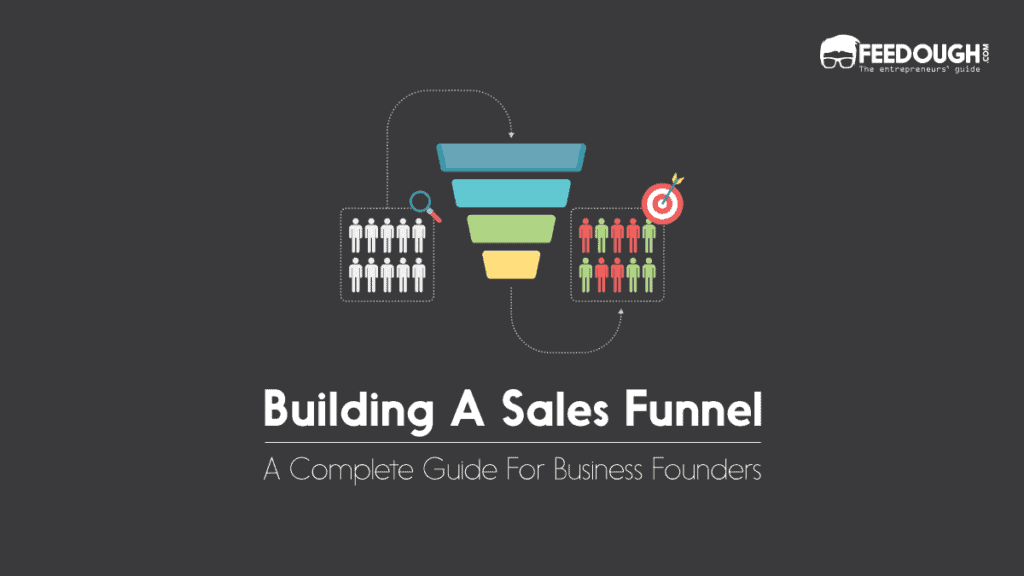
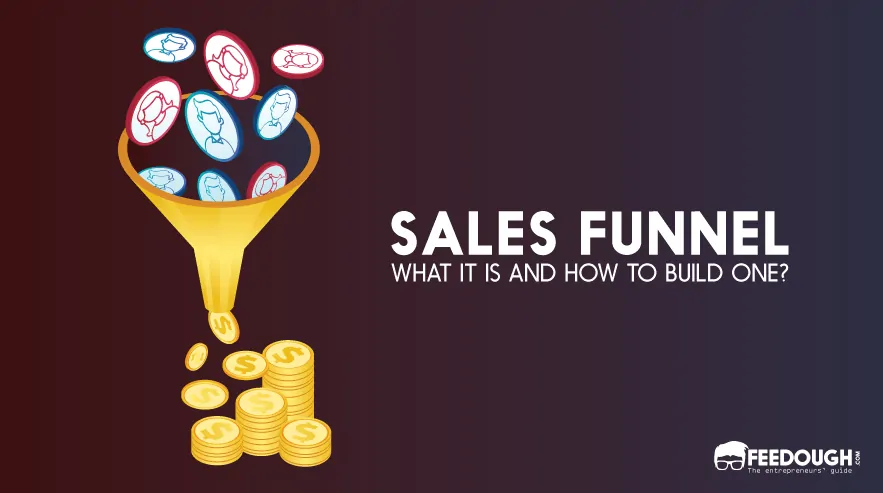
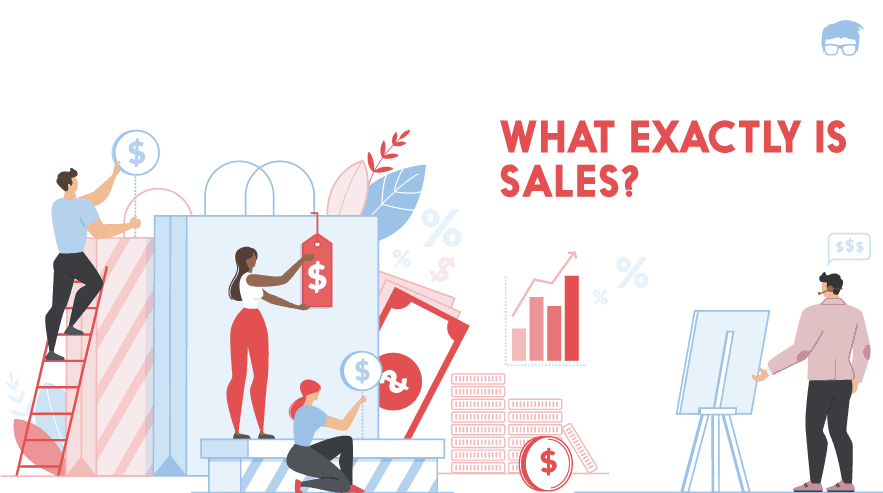
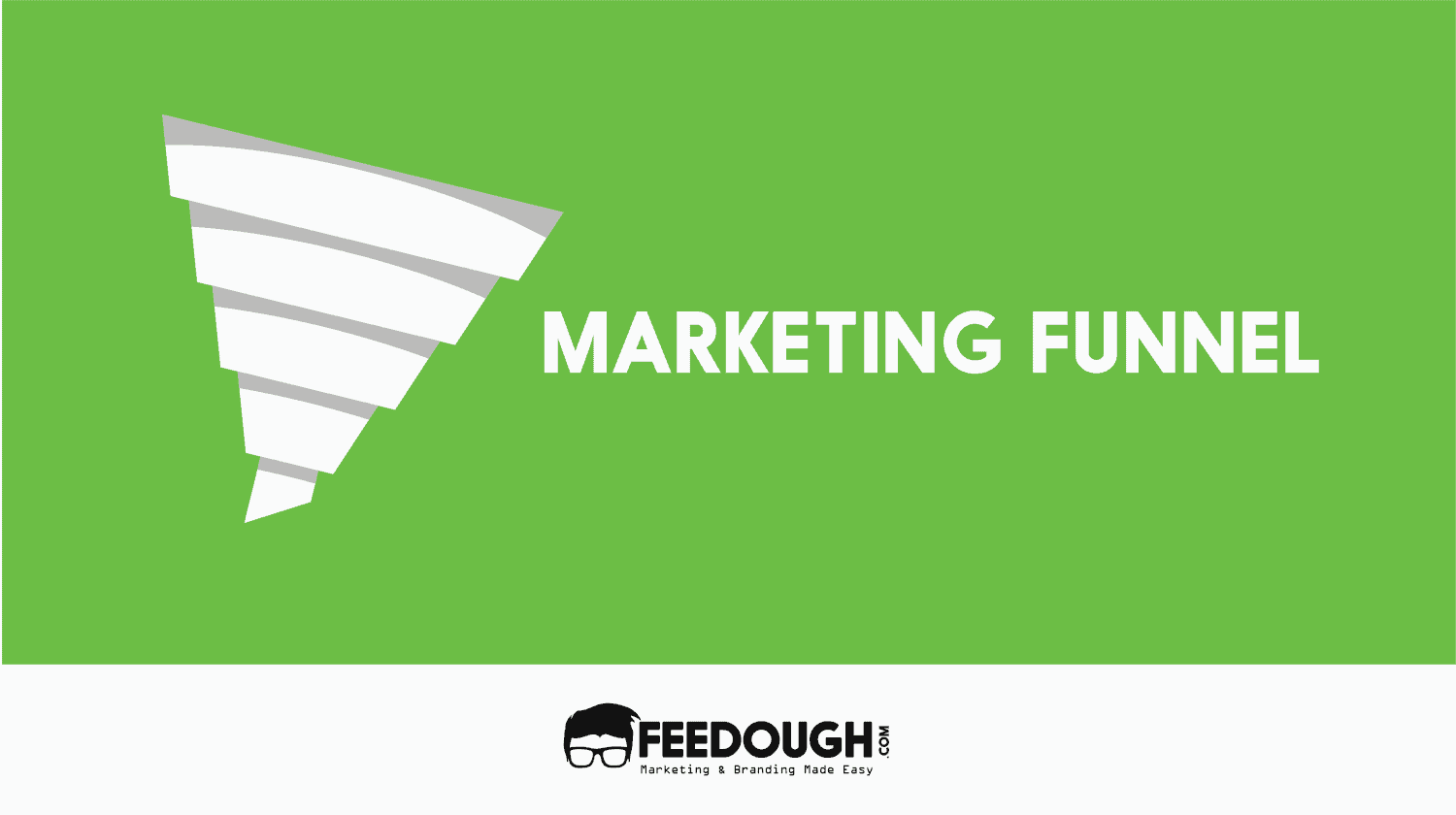
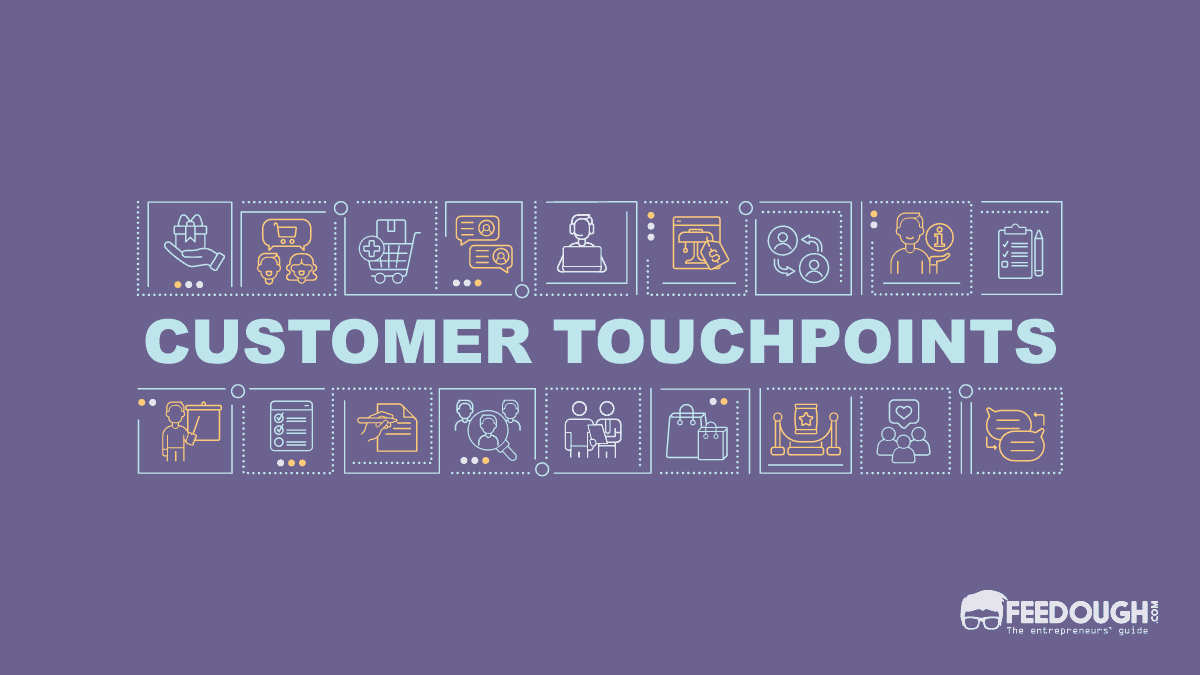
![Go-To-Market Strategy [The Ultimate Guide] go-to-market strategy](https://www.feedough.com/wp-content/uploads/2019/10/go-to-market-strategy.webp)
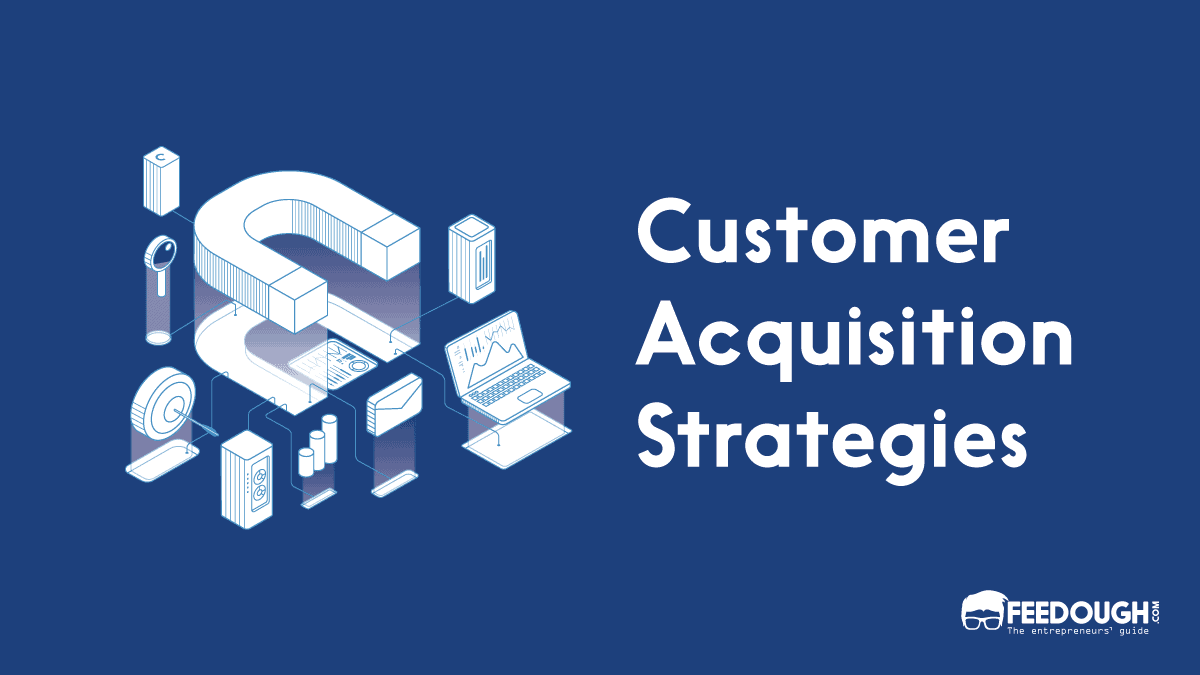
![What Is Demand Generation? [The Ultimate Guide] What Is Demand Generation?](https://www.feedough.com/wp-content/uploads/2019/05/DEMAND-GENERATION.webp)
